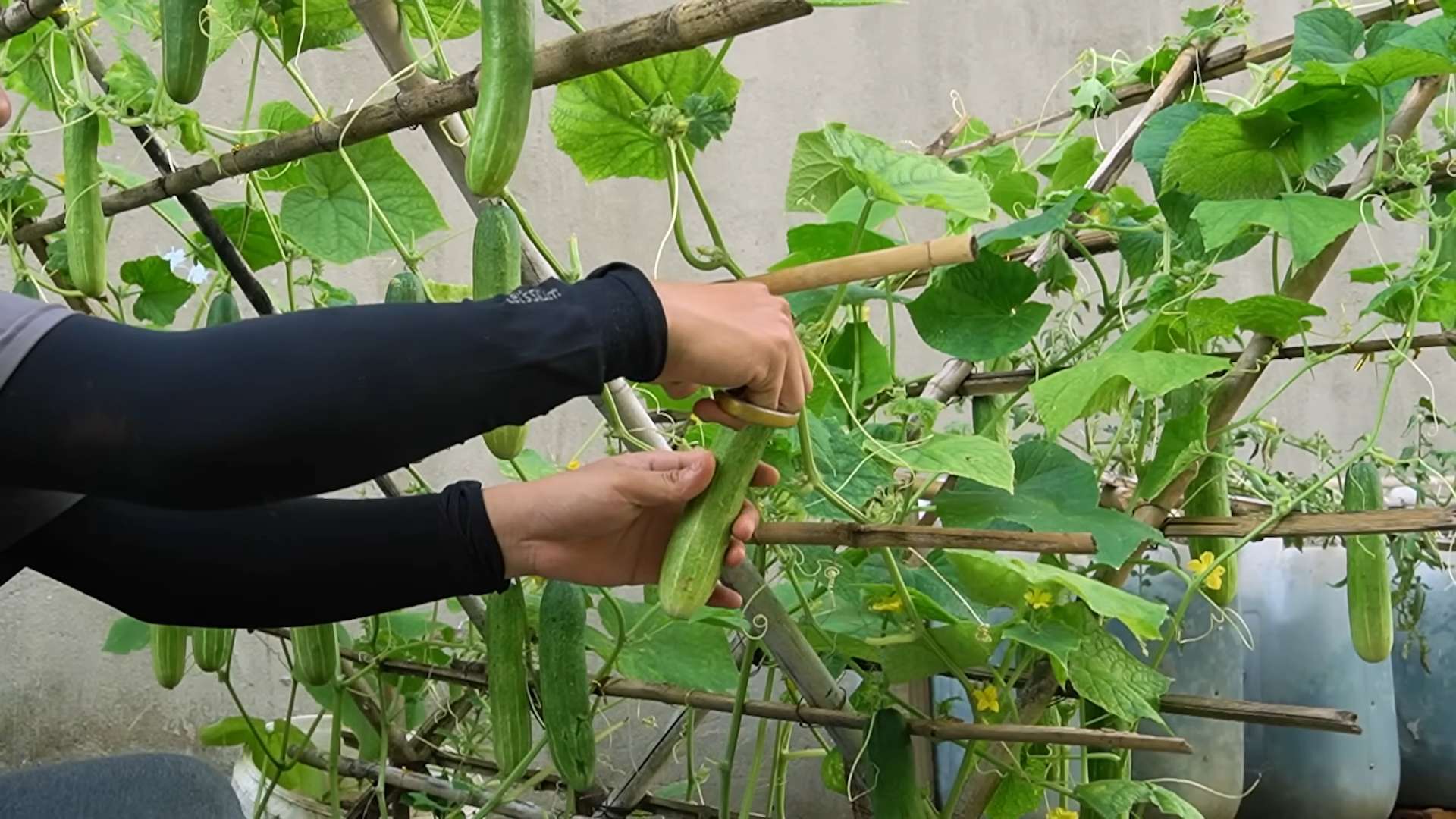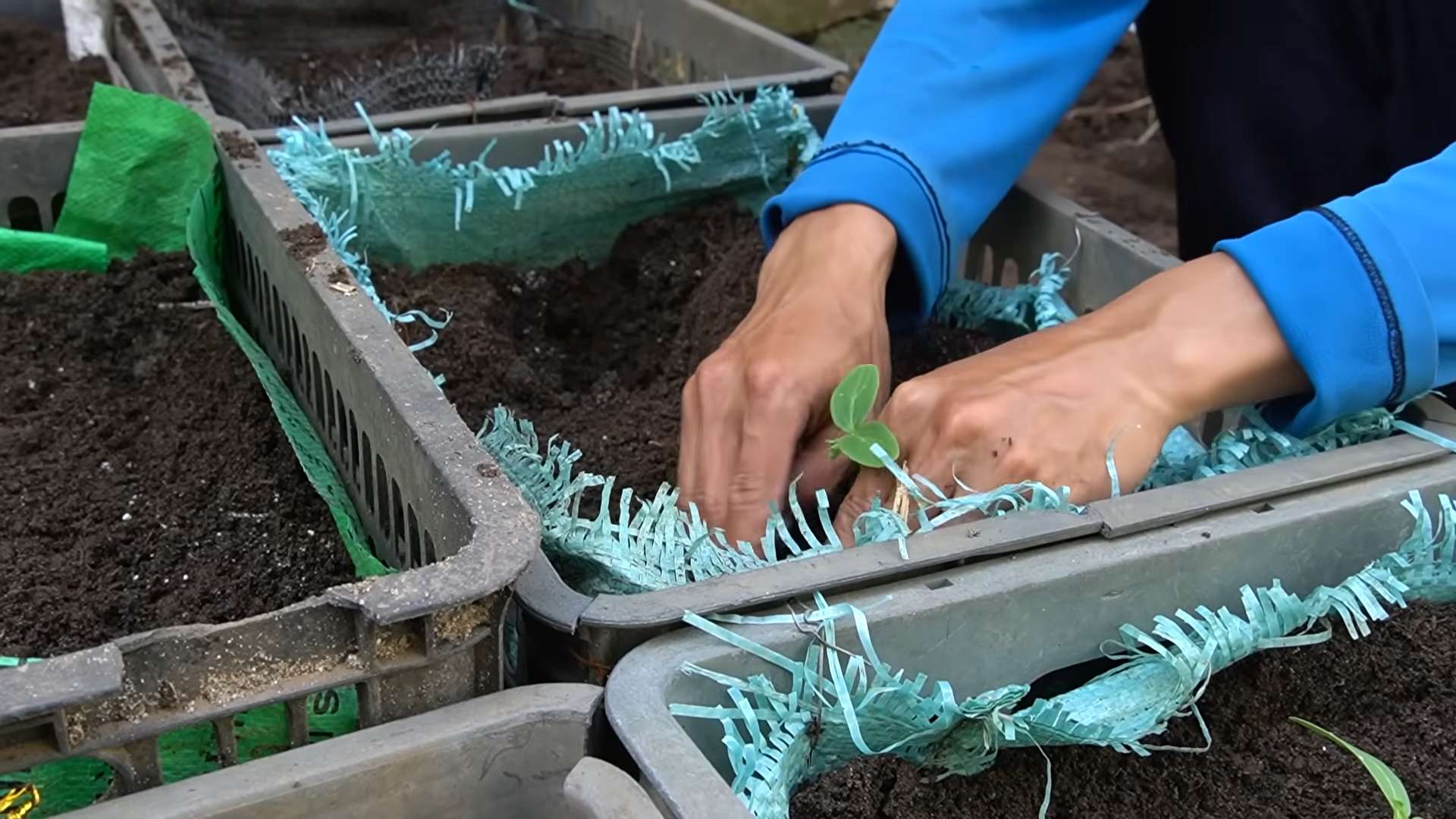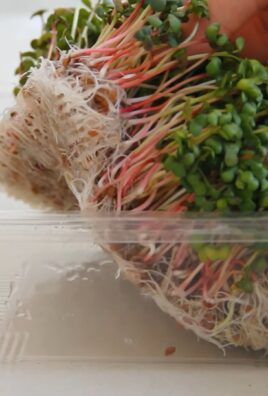Cucumber garden secrets are the key to unlocking a bountiful harvest of crisp, refreshing cucumbers right in your own backyard! Have you ever dreamt of biting into a perfectly juicy cucumber, grown with your own two hands? I know I have! For centuries, cucumbers have been a staple in gardens around the world, dating back to ancient civilizations in India and beyond, where they were prized for their cooling properties and versatility in culinary dishes.
But let’s be honest, growing cucumbers can sometimes feel like a bit of a mystery. You might find yourself battling pests, dealing with yellowing leaves, or simply not getting the yield you hoped for. That’s where these DIY tricks and hacks come in! I’m going to share some of my favorite, tried-and-true methods to help you cultivate a thriving cucumber patch.
This article is packed with practical advice that will transform your cucumber growing experience. Whether you’re a seasoned gardener or just starting out, these tips will empower you to overcome common challenges and maximize your cucumber production. Get ready to discover the cucumber garden secrets that will have you enjoying delicious, homegrown cucumbers all season long!

Unlocking the Secrets to a Bumper Cucumber Harvest: My DIY Guide
Hey there, fellow gardeners! I’m so excited to share my tried-and-true methods for growing cucumbers that practically leap off the vine. Forget those wimpy, store-bought cukes – we’re talking about crisp, juicy, and flavorful cucumbers that will make your salads sing! This isn’t just about planting seeds; it’s about understanding what cucumbers crave and giving them exactly that. Get ready to transform your cucumber game!
Understanding Cucumber Needs: The Foundation for Success
Before we dive into the nitty-gritty, let’s talk about what makes cucumbers tick. They’re not particularly fussy, but understanding their basic needs is crucial for a thriving harvest.
* Sunlight: Cucumbers are sun-worshippers! They need at least 6-8 hours of direct sunlight per day. The more, the merrier.
* Soil: Well-draining soil is key. Cucumbers hate sitting in soggy soil, which can lead to root rot. Amend your soil with compost or well-rotted manure to improve drainage and fertility.
* Water: Consistent moisture is vital, especially during fruiting. Aim for about an inch of water per week, either from rain or irrigation.
* Warmth: Cucumbers are warm-weather crops. Don’t even think about planting them until the soil has warmed up to at least 60°F (15°C).
* Support: Most cucumber varieties are vines and need support to climb. This improves air circulation, reduces disease, and makes harvesting easier.
Section 1: Preparing Your Cucumber Paradise
This is where the magic begins! Proper preparation sets the stage for a healthy and productive cucumber patch.
1. Choose the Right Variety: Not all cucumbers are created equal! Consider your climate, space, and desired use.
* Slicing cucumbers: These are your classic salad cucumbers, like ‘Marketmore’ or ‘Straight Eight’.
* Pickling cucumbers: These are smaller and have thicker skins, perfect for pickling, like ‘National Pickling’ or ‘Boston Pickling’.
* Burpless cucumbers: These are milder and easier to digest, like ‘Sweet Success’ or ‘Armenian’.
I personally love ‘Spacemaster’ for container gardening because it’s compact and produces delicious slicing cucumbers.
2. Select the Perfect Location: Remember that sunlight requirement? Choose a spot in your garden that gets plenty of sunshine throughout the day. Also, consider proximity to a water source for easy watering.
3. Prepare the Soil: This is arguably the most important step.
* Clear the area: Remove any weeds, rocks, or debris.
* Amend the soil: Dig in plenty of compost or well-rotted manure. I usually add about 2-3 inches of compost to the top layer of soil.
* Check the pH: Cucumbers prefer a slightly acidic soil pH of around 6.0-6.8. You can test your soil pH with a simple soil testing kit. If your soil is too alkaline, you can amend it with sulfur.
4. Build a Support System: Cucumbers are vines, so they need something to climb on. There are several options:
* Trellis: A trellis is a sturdy structure that provides excellent support. You can buy a pre-made trellis or build your own.
* Fence: If you have a fence, you can train your cucumbers to climb it.
* Tomato cages: While not ideal for all varieties, tomato cages can work for bush-type cucumbers.
I prefer using a simple A-frame trellis made from bamboo poles. It’s easy to build and provides ample support.
Section 2: Planting Your Cucumber Seeds or Seedlings
Now for the fun part – getting those cucumbers in the ground!
1. Starting Seeds Indoors (Optional): If you live in a cooler climate, you can start your cucumber seeds indoors about 3-4 weeks before the last expected frost.
* Use seed-starting trays or pots: Fill them with a seed-starting mix.
* Plant seeds ½ inch deep: Gently press the soil down.
* Keep the soil moist: Water gently and keep the trays in a warm, sunny location.
* Harden off seedlings: Before transplanting them outdoors, gradually acclimate them to the outdoor conditions by exposing them to increasing amounts of sunlight and wind over a week.
2. Direct Sowing: If your soil is warm enough, you can sow cucumber seeds directly into the garden.
* Sow seeds ½ inch deep: Plant 2-3 seeds per hill or spacing.
* Space hills 2-3 feet apart: This gives the vines plenty of room to spread.
* Thin seedlings: Once the seedlings emerge, thin them to one plant per hill.
3. Transplanting Seedlings: If you started your seeds indoors, carefully transplant them into the garden after the last frost.
* Dig a hole slightly larger than the root ball: Gently remove the seedling from its pot and place it in the hole.
* Backfill with soil: Gently press the soil down around the plant.
* Water thoroughly: This helps the roots settle in.
Section 3: Nurturing Your Cucumber Plants: The Secret Sauce
This is where consistent care comes into play. Regular watering, fertilizing, and pest control are essential for a bountiful harvest.
1. Watering: Cucumbers need consistent moisture, especially during hot weather. Water deeply and regularly, aiming for about an inch of water per week.
* Water at the base of the plant: Avoid wetting the foliage, which can encourage fungal diseases.
* Use a soaker hose or drip irrigation: This is the most efficient way to water cucumbers.
* Mulch around the plants: This helps retain moisture and suppress weeds. I like to use straw or wood chips.
2. Fertilizing: Cucumbers are heavy feeders and benefit from regular fertilization.
* Use a balanced fertilizer: Look for a fertilizer with equal amounts of nitrogen, phosphorus, and potassium (e.g., 10-10-10).
* Fertilize every 2-3 weeks: Follow the instructions on the fertilizer label.
* Side-dress with compost: Adding compost to the soil around the plants provides a slow-release source of nutrients.
I personally love using fish emulsion as a natural fertilizer. It’s gentle on the plants and provides a good boost of nutrients.
3. Pest and Disease Control: Cucumbers are susceptible to a few common pests and diseases.
* Cucumber beetles: These small, yellow-and-black beetles can damage foliage and transmit diseases. Handpick them off the plants or use insecticidal soap.
* Squash bugs: These pests suck the sap from the plants, causing them to wilt and die. Handpick them off the plants or use insecticidal soap.
* Powdery mildew: This fungal disease causes a white, powdery coating on the leaves. Improve air circulation by pruning the vines and use a fungicide if necessary.
* Downy mildew: This fungal disease causes yellow spots on the leaves. Improve air circulation and use a fungicide if necessary.
I always inspect my cucumber plants regularly for any signs of pests or diseases. Early detection is key to preventing serious problems.
4. Pruning: Pruning can improve air circulation and encourage fruit production.
* Remove suckers: These are small shoots that grow from the base of the plant.
* Pinch off the ends of the vines: This encourages the plant to produce more side shoots, which will bear more fruit.
* Remove yellowing or diseased leaves: This helps prevent the spread of disease.
Section 4: Harvesting Your Cucumber Bounty
The moment you’ve been waiting for! Harvesting cucumbers at the right time is crucial for optimal flavor and texture.
1. Harvest when cucumbers are the right size: The size will vary depending on the variety. Slicing cucumbers are usually harvested when they are 6-8 inches long, while pickling cucumbers are harvested when they are 2-4 inches long.
2. Harvest regularly: Cucumbers produce more fruit if you harvest them regularly.
3. Use a sharp knife or scissors: Cut the cucumber from the vine, leaving a small stem attached.
4. Handle cucumbers gently: They bruise easily.
5. Store cucumbers in the refrigerator: They will keep for about a week.
My Secret Weapon: Companion Planting
Companion planting is the practice of planting different plants together to benefit each other. Here are some of my favorite cucumber

Conclusion
So, there you have it! Unlocking the secrets to a thriving cucumber garden isn’t about expensive fertilizers or complicated techniques. It’s about understanding the plant’s needs and leveraging simple, DIY solutions to meet them. This DIY trick, focusing on creating a nutrient-rich cucumber fertilizer tea from readily available kitchen scraps and garden waste, is a game-changer for several reasons.
First and foremost, it’s incredibly cost-effective. Instead of shelling out money for commercial fertilizers, you’re repurposing materials you’d otherwise throw away. Think about it: vegetable peelings, coffee grounds, eggshells – all potent sources of essential nutrients that cucumbers crave. This not only saves you money but also reduces your environmental impact by minimizing waste.
Secondly, this DIY approach allows you to tailor the fertilizer to your specific cucumber plants’ needs. You have complete control over the ingredients, ensuring that your plants receive the precise blend of nutrients they require for optimal growth, abundant flowering, and, ultimately, a bountiful harvest of crisp, delicious cucumbers.
Thirdly, it’s a sustainable and organic way to nourish your garden. You’re avoiding harsh chemicals and synthetic additives that can harm beneficial soil microorganisms and potentially contaminate your produce. By using natural ingredients, you’re creating a healthier ecosystem in your garden, promoting long-term soil fertility and plant health.
But the benefits don’t stop there. This DIY cucumber fertilizer tea is incredibly easy to make. The process is straightforward, requiring minimal effort and time. You can whip up a batch in just a few minutes, and the results are truly remarkable.
Ready to take your cucumber garden to the next level?
Consider these variations to further customize your DIY fertilizer tea:
* **Comfrey Boost:** If you have comfrey growing in your garden, add a handful of comfrey leaves to your fertilizer tea. Comfrey is incredibly rich in potassium, a vital nutrient for fruit development.
* **Epsom Salt Enhancement:** For an extra boost of magnesium, dissolve a tablespoon of Epsom salts in your fertilizer tea before applying it to your plants. Magnesium helps with chlorophyll production, leading to greener, healthier leaves.
* **Banana Peel Power:** Banana peels are packed with potassium. Bury them near your cucumber plants or add them to your compost tea for a natural potassium boost.
* **Seaweed Solution:** If you live near the coast, consider adding seaweed to your fertilizer tea. Seaweed is a rich source of trace minerals and growth hormones that can promote vigorous plant growth.
We strongly encourage you to try this DIY cucumber garden secret and witness the difference it makes in your cucumber yield and overall plant health. Don’t be afraid to experiment with different ingredients and find the combination that works best for your garden.
Once you’ve tried it, we’d love to hear about your experience! Share your results, tips, and variations in the comments below. Let’s create a community of cucumber enthusiasts who are passionate about growing healthy, delicious cucumbers using sustainable and cost-effective methods. Your insights could help other gardeners unlock the full potential of their cucumber patches. Happy gardening!
Frequently Asked Questions (FAQ)
What exactly is cucumber fertilizer tea, and why is it beneficial?
Cucumber fertilizer tea is a liquid fertilizer made by steeping nutrient-rich organic materials in water. This process extracts essential nutrients from the materials, creating a potent solution that can be used to nourish cucumber plants. It’s beneficial because it provides a readily available source of nutrients, promotes healthy growth, increases yields, and improves the overall health and vigor of cucumber plants. It’s also a sustainable and cost-effective alternative to commercial fertilizers.
What kind of kitchen scraps and garden waste can I use to make cucumber fertilizer tea?
A wide variety of kitchen scraps and garden waste can be used, including:
* Vegetable peelings (especially potato, carrot, and zucchini)
* Coffee grounds
* Eggshells (crushed)
* Banana peels
* Comfrey leaves
* Grass clippings (untreated with herbicides)
* Weeds (before they go to seed)
* Tea bags (remove staples)
Avoid using meat scraps, dairy products, or oily foods, as these can attract pests and create unpleasant odors.
How do I make cucumber fertilizer tea?
The process is simple:
1. Collect your chosen kitchen scraps and garden waste.
2. Place the materials in a large bucket or container.
3. Fill the container with water, ensuring that the materials are fully submerged.
4. Let the mixture steep for 1-2 weeks, stirring occasionally.
5. Strain the liquid through a cheesecloth or fine-mesh sieve to remove solid particles.
6. Dilute the resulting tea with water before applying it to your cucumber plants. A good starting point is a 1:10 ratio (1 part tea to 10 parts water).
How often should I apply cucumber fertilizer tea to my plants?
Apply the diluted fertilizer tea every 1-2 weeks during the growing season. You can pour it directly onto the soil around the base of the plants or use it as a foliar spray. Avoid applying it during the hottest part of the day to prevent leaf burn.
Can I use cucumber fertilizer tea on other plants in my garden?
Yes, cucumber fertilizer tea can be beneficial for other plants as well, especially those that are heavy feeders like tomatoes, peppers, and squash. However, it’s always a good idea to test it on a small area first to ensure that it doesn’t cause any adverse reactions.
What are the signs that my cucumber plants need fertilizer?
Common signs of nutrient deficiency in cucumber plants include:
* Yellowing leaves
* Stunted growth
* Poor fruit development
* Pale or misshapen fruits
* Weak stems
If you notice any of these signs, it’s a good indication that your plants need a boost of nutrients.
Is there a risk of over-fertilizing my cucumber plants with DIY fertilizer tea?
While it’s less likely to over-fertilize with DIY fertilizer tea compared to commercial fertilizers, it’s still possible. Over-fertilizing can lead to excessive vegetative growth, reduced fruit production, and nutrient imbalances. To avoid this, start with a diluted solution and observe your plants closely. If you notice any signs of over-fertilization, such as leaf burn or excessive salt buildup in the soil, reduce the frequency or concentration of your applications.
How do I store cucumber fertilizer tea?
Store the strained fertilizer tea in a cool, dark place in a sealed container. It can be stored for several weeks, but it’s best to use it within a few days for optimal nutrient potency. You may notice a slight odor, which is normal.
Can I use this fertilizer tea in hydroponic systems?
While technically possible, it’s generally not recommended to use DIY fertilizer tea in hydroponic systems. The organic matter in the tea can clog the system and promote the growth of harmful bacteria. Hydroponic systems require carefully balanced nutrient solutions specifically formulated for soilless cultivation.
What if I don’t have a garden or access to garden waste? Can I still make this fertilizer tea?
Yes, you can still make fertilizer tea using primarily kitchen scraps. Focus on using nutrient-rich ingredients like vegetable peelings, coffee grounds, eggshells, and banana peels. You can also purchase dried seaweed or comfrey leaves online or at garden centers to supplement your kitchen scraps.
How does this DIY fertilizer compare to commercial cucumber fertilizers?
Commercial cucumber fertilizers are often formulated with specific NPK (nitrogen, phosphorus, potassium) ratios designed to promote cucumber growth. While DIY fertilizer tea may not have a precisely measured NPK ratio, it provides a broad spectrum of essential nutrients and micronutrients that are beneficial for cucumber plants. It’s also a more sustainable and environmentally friendly option. The key is to observe your plants and adjust your DIY recipe based on their needs.
What if my cucumber plants are already flowering? Is it too late to start using this fertilizer tea?
No, it’s not too late! In fact, providing your cucumber plants with a nutrient boost during flowering can help them produce more abundant and higher-quality fruits. Just be sure to use a diluted solution and avoid getting the fertilizer tea on the flowers themselves.
Can I use this fertilizer tea on seedlings?
Yes, but use a very diluted solution (e.g., 1:20 ratio) to avoid burning the delicate roots of seedlings. You can also use a watering can with a gentle shower head to apply the fertilizer tea evenly.
What are some other tips for growing healthy cucumbers?
In addition to using DIY fertilizer tea, here are some other tips for growing healthy cucumbers:
* Choose a sunny location with well-drained soil.
* Provide support for your cucumber plants to climb, such as a trellis or fence.
* Water regularly, especially during hot, dry weather.
* Mulch around the plants to retain moisture and suppress weeds.
* Protect your plants from pests and diseases.
* Harvest your cucumbers regularly to encourage continued production.




Leave a Comment